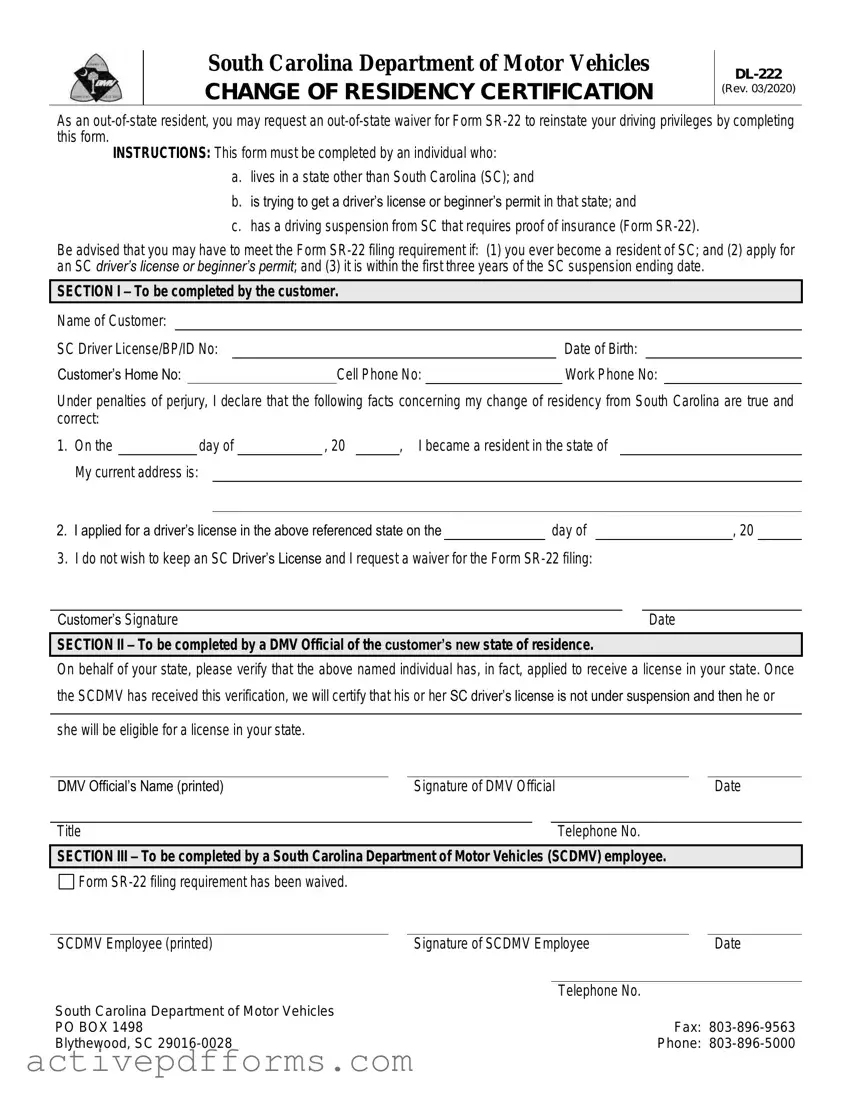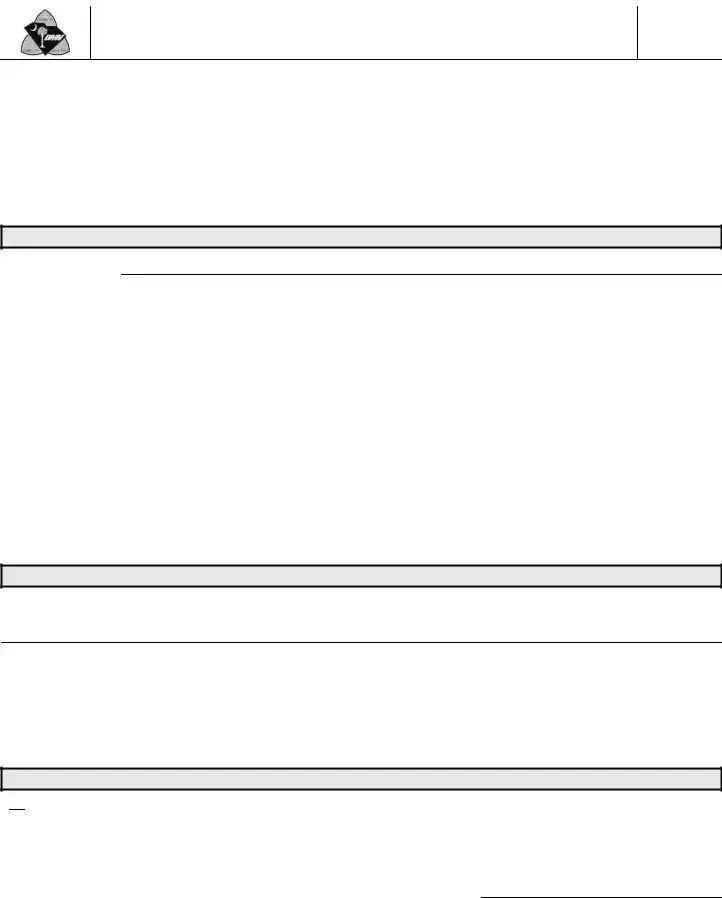South Carolina Department of Motor Vehicles
CHANGE OF RESIDENCY CERTIFICATION
As an out-of-state resident, you may request an out-of-state waiver for Form SR-22 to reinstate your driving privileges by completing this form.
INSTRUCTIONS: This form must be completed by an individual who:
a.lives in a state other than South Carolina (SC); and
b.is trying to get a driver’s license or beginner’s permit in that state; and
c.has a driving suspension from SC that requires proof of insurance (Form SR-22).
Be advised that you may have to meet the Form SR-22 filing requirement if: (1) you ever become a resident of SC; and (2) apply for an SC driver’s license or beginner’s permit; and (3) it is within the first three years of the SC suspension ending date.
SECTION I – To be completed by the customer.
Name of Customer:
|
|
|
|
|
|
|
|
|
SC Driver License/BP/ID No: |
|
|
|
|
Date of Birth: |
|
Customer’s Home No: |
|
|
Cell Phone No: |
|
|
Work Phone No: |
|
Under penalties of perjury, I declare that the following facts concerning my change of residency from South Carolina are true and correct:
1. |
On the |
|
|
day of |
|
, 20 |
|
, I became a resident in the state of |
|
|
|
|
|
|
My current address is: |
|
|
|
|
|
|
|
|
|
|
|
|
|
|
|
|
|
|
|
|
|
|
|
|
|
2. |
I applied for a driver’s license in the above referenced state on the |
|
day of |
|
|
, 20 |
|
3. |
I do not wish to keep an SC Driver’s License and I request a waiver for the Form SR-22 filing: |
|
|
|
|
|
|
|
|
|
|
|
|
|
|
|
|
|
|
Customer’s Signature |
|
|
|
|
|
|
|
|
|
|
|
Date |
SECTION II – To be completed by a DMV Official of the customer’s new state of residence.
On behalf of your state, please verify that the above named individual has, in fact, applied to receive a license in your state. Once the SCDMV has received this verification, we will certify that his or her SC driver’s license is not under suspension and then he or
she will be eligible for a license in your state.
|
|
|
|
|
|
|
|
|
DMV Official’s Name (printed) |
|
Signature of DMV Official |
|
|
Date |
|
|
|
|
|
|
|
Title |
|
|
|
|
Telephone No. |
|
SECTION III – To be completed by a South Carolina Department of Motor Vehicles (SCDMV) employee.

 Form SR-22 filing requirement has been waived.
Form SR-22 filing requirement has been waived.
SCDMV Employee (printed) |
|
Signature of SCDMV Employee |
|
Date |
Telephone No.
South Carolina Department of Motor Vehicles |
|
|
PO BOX 1498 |
Fax: |
803-896-9563 |
Blythewood, SC 29016-0028 |
Phone: |
803-896-5000 |



 Form
Form